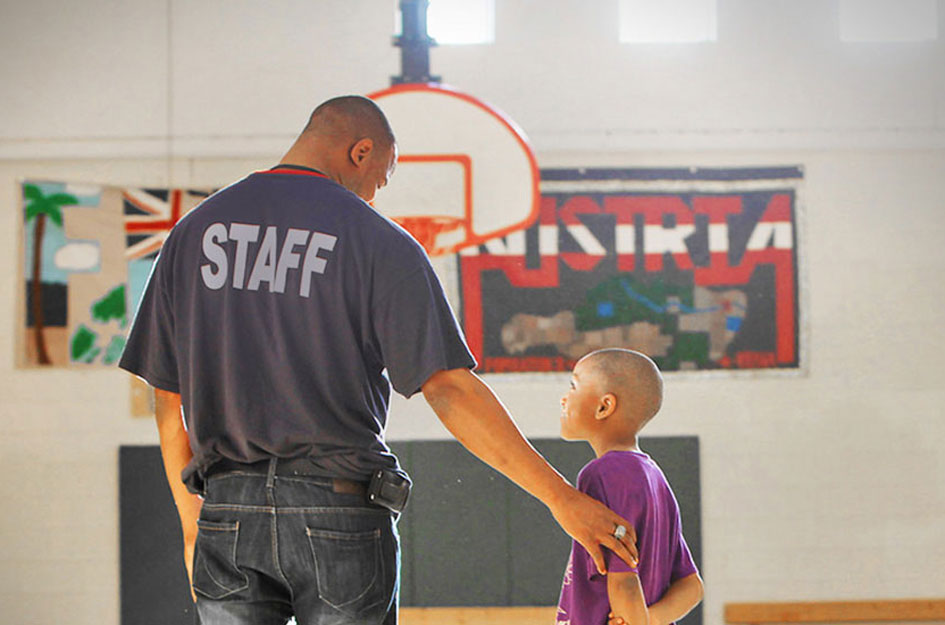This article was updated on 9/16/2019.
Suicide is a major health concern in the United States that impacts thousands of young people, their families and communities each year. Nationally, suicide is the second leading cause of death for young people between the ages of 10 and 24.
Childhood, especially the teen years, can be a stressful time. Adolescence signals changes in the body, thoughts and feelings. Those changes can be unsettling for some youth, especially when combined with family issues or problems in school, and may lead to feelings of stress, confusion, fear and doubt that seem insurmountable. Suicide may feel like the only solution.
Boys & Girls Clubs of Columbus recently piloted a suicide prevention program in response to the alarming rate of youth suicide nationally, as well as increases in reporting of local Club members disclosing suicidal ideation or thoughts. “We had a process in place to respond to youth, but we wanted to enhance our approach to be more preventative,” says Doug Wolf, Chief Program Officer at Boys & Girls Clubs of Columbus.
The Club’s suicide prevention program was designed in collaboration with the Boys & Girls Clubs of Ohio Alliance, The Center for Suicide Prevention and Research at Nationwide Children’s Hospital in Columbus and the American Association of Suicidology in Washington, D.C. One of the integral techniques the program utilizes is “See. Say. Support.”
“If you see something is wrong, you say something to that young person,” says Doug. “For example, ‘I see that you are not having as much fun as you used to, or I see that you’ve been struggling.’ Inquire using both general and direct questions and provide support – whether it’s supporting them in the moment or finding a trusted adult to help them.”
“It’s important to note that talking about suicide isn’t going to lead people down the path,” says Doug. “We’re fearful if we talk about it, it’s going to move someone in that direction. But, that’s not the case. We need to create opportunities to have these conversations. That’s the only way that we are going to create an environment in which young people feel comfortable and can get the support they need.”
Suicide is preventable. By recognizing the warning signs, listening, talking and taking action, you could save a life. Learn how you can help by implementing these five evidenced-informed action steps for communicating with someone who may be suicidal from the
National Suicide Prevention Lifeline:
- Ask
Asking the question “Are you thinking about suicide?” communicates that you are open to speaking about suicide in a non-judgmental, supportive way. Asking in this direct manner can open the door for effective dialogue and allow everyone to see what steps need to be taken. Another piece of the “Ask” step is to listen. Listening to a person’s reasons for being in pain, as well as reasons they want to stay alive, are both incredibly important. Help them focus on their reasons for living and avoid trying to impose your reasons for them to stay alive.
- Keep Them Safe
It is important to find out a few things to establish immediate safety. Have they already done anything to try to harm themselves before talking to you? Do they have a detailed plan for how they would kill themselves? What sort of access do they have to their planned method? Knowing the answers to these questions can tell you a lot about the severity of danger this person is in. For example, if they have immediate access to a firearm or medications, they may be at higher risk for enacting their plan, and emergency steps might be necessary (such as calling 911 or taking them to an emergency room).
- Be There
Being there for someone with thoughts of suicide is lifesaving. Increasing someone’s connectedness to others and limiting their isolation is shown to be a protective factor against suicide. This could mean being physically present for someone, speaking with them on the phone, finding others who can help, or any other way that shows support.
- Help Them Connect
Helping someone with suicidal thoughts connect with ongoing treatment, supports and resources can help them establish a safety net for those moments when they are in a crisis. One way to help them connect is to develop a safety plan. This can include ways for them to identify when or if they start to experience thoughts of suicide, and what to do in those crisis moments. This plan can also include a list of individuals to contact when a crisis occurs, contact for a mental health professional, and resources in the community.
- Follow Up
After you have connected them with the immediate support systems they need, make sure to follow up with them to see how they are doing. Leave a message, send a text, or give them a call to check in. This type of contact and support can increase their feelings of connectedness and reduce their risk for suicide.
In addition to these tips, our partners at On Our Sleeves provide guidance for families on preventing suicide. Watch the video Suicide Prevention Tips For All Families.
If you or someone you know is in need of support, seek help immediately. You can call the free, confidential National Suicide Prevention Lifeline at 1-800-273-TALK (8255) at any time.
Physical and mental health are critical for all young people, and that is why Boys & Girls Clubs have also partnered with organizations like the Crisis Text Line and Mental Health First Aid – so that all young people, and the caring mentors at our Clubs that guide them, have access to resources that can help them during critical times.
Read our Suicide Prevention Resource Guide to get more advice on how to have an honest and open conversation with the young people in your life about suicide.
This article was adapted from an original blog post that appeared on the ClubExperience.blog.

